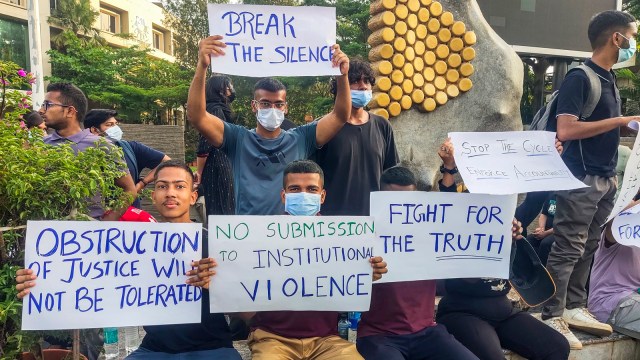
Of all the outraged comments that have exploded across media following last week’s tragedy of a student suicide and protests by Nepali students at Kalinga Institute of Industrial Technology (KIIT) in Odisha, this one on Facebook, made by an Odia person, stood out for me: “The most pathetic situation is that Nepal has a century old tradition with Lord Jagannath and so any student from Nepal should be treated with utmost care if we have faith in Lord Jagannath.”
Should hospitality depend on religious faith? Even if we stretch ourselves to identify religious kinship as a crucial bond between cultures, what place does it have in the structures of international education, that too in fields that are far removed from theology, religious study, and philosophy? For an institute that not only marks itself as a venue of engineering education but is keen to situate that education as “industrial”, the bond of religion as a criterion of international hospitality seems to uphold the kind of irony that has increasingly come to define the Indian subcontinent.
I think the sentiment is noble, as religious virtue, in its original capacity, often tends to be. But leaving aside the problem of making such sentiment the basis of hospitality, it’s important to attend to the glaring cultures of hierarchy, exploitation and discriminatory hostility that both the tragedy of the student suicide and the vicious institutional riposte against student protests have revealed to us. Hostility between cultures and communities has long stigmatised the Indian subcontinent, and religious sentiments have hidden these hostilities just as often as they have mobilised them. The alleged harassment of the dead Nepali female student by a student from Uttar Pradesh shows gendered and sexualised exploitation as a natural component of such cultures of discrimination.
“The Indian psyche is full of suppressed violence,” the terrifying supercop of Khalistan-era Punjab, KPS Gill told the poet Dom Moraes, whose book, Out of God’s Oven (co-authored with Sarayu Srivasta), is a heartrending account of inequity that passes in the name of diversity in the postcolonial experiment of a nation. As recent events all around us – particularly to the east – have reminded us, this is the culture of the entire Subcontinent. India’s place in this culture, as the largest and the most powerful nation, has scarcely shaped the responsible leadership its size and economic weight calls for.
“Nepali students should be grateful for the free and subsidised meals and education sponsored by the generous founder of the great institute. That the amount spent on them exceeds the national budget of Nepal!” The shameful language used by some of the faculty and administration members while addressing the protesting Nepali students is the condescension-turned-violent exploitation that mainstream India has often revealed for its more marginalised neighbours. I cannot help but see echoes of the kind of discrimination and bullying that even students from India’s northeast have long weathered in the higher education institutions of Delhi. The invocation of religious solidarity with Nepal through a shared devotion to Lord Jagannath is almost a parodic invocation of our government’s purported policy towards Hindus in the neighbouring states, which it sees as an ocean of hostility against Hindus – something to which the recent incidents in Bangladesh have offered some sad verisimilitude.
These are trying times for residential higher education in India, which has only known the largely male hostel population across engineering colleges unified by more or less homogenous career goals. Student mental-health across engineering colleges, with its violent culture of bullying, discrimination, and competitiveness, has spawned nightmares of its own over the decades, with poor and caste-oppressed students paying the heaviest prices. As residential higher education expands beyond the technical and the professional, moving to more holistic models of liberal arts and sciences that draw a greater share of women, it makes up a student body with more variegated career goals. The challenges of residential education, integral to a liberal arts education, rise to new planes. Almost around the same time the Nepali student took her own life at KIIT, tragedy struck the campus of Ashoka University in the National Capital Region, taking the lives of two students in an accident and suicide. And there have been many others in recent years.
Residential education, while a wonderful and empowering thing, providing an experience the commuter student can never get, is still a relatively new experience in modern India, where it once thrived in institutions like Nalanda and Takshashila, attracting large groups of students from neighbouring countries. While modern residential higher education is common and customary in a country like the US, in modern India, leaving one’s home, family, and town to go and give up four years of tender, crucial life to the trust of an institution is still a nascent phenomenon. Both the excitement and risks this new life brings forth need a long and hard reckoning.
Keeping communal discrimination and sexual exploitation out of the already challenging experience of residential education would be a good place to start. If done well, this model of higher education is certain to auger empowered beginnings to the independent careers of youth across our subcontinent. But to betray these entrusted lives can mean snuffing them out even before they are properly lit.
Majumdar is the writer, most recently, of The Amateur: Self-Making and the Humanities in the Postcolony